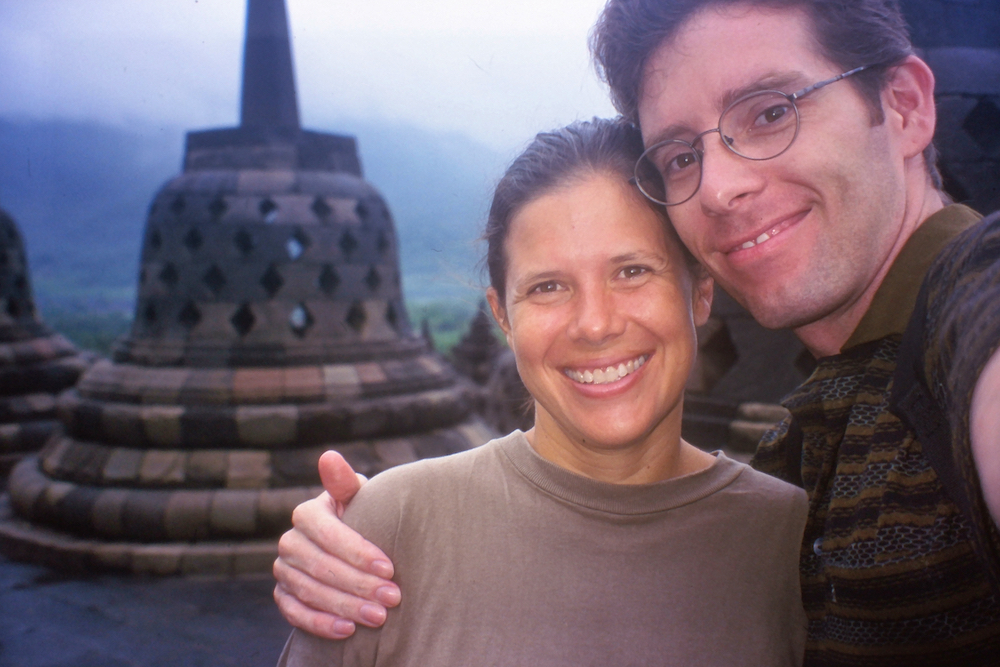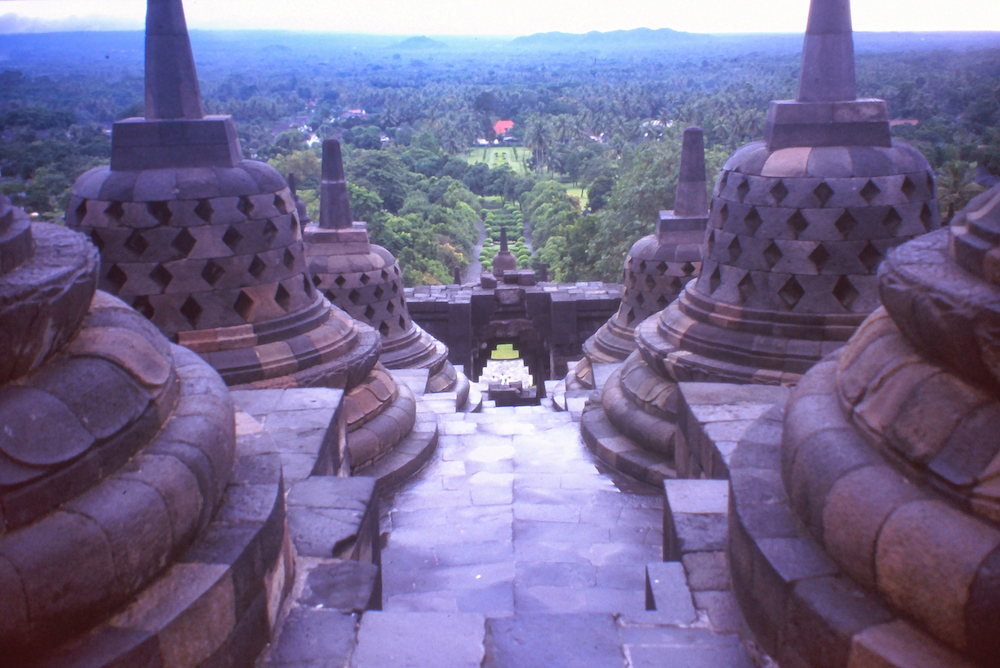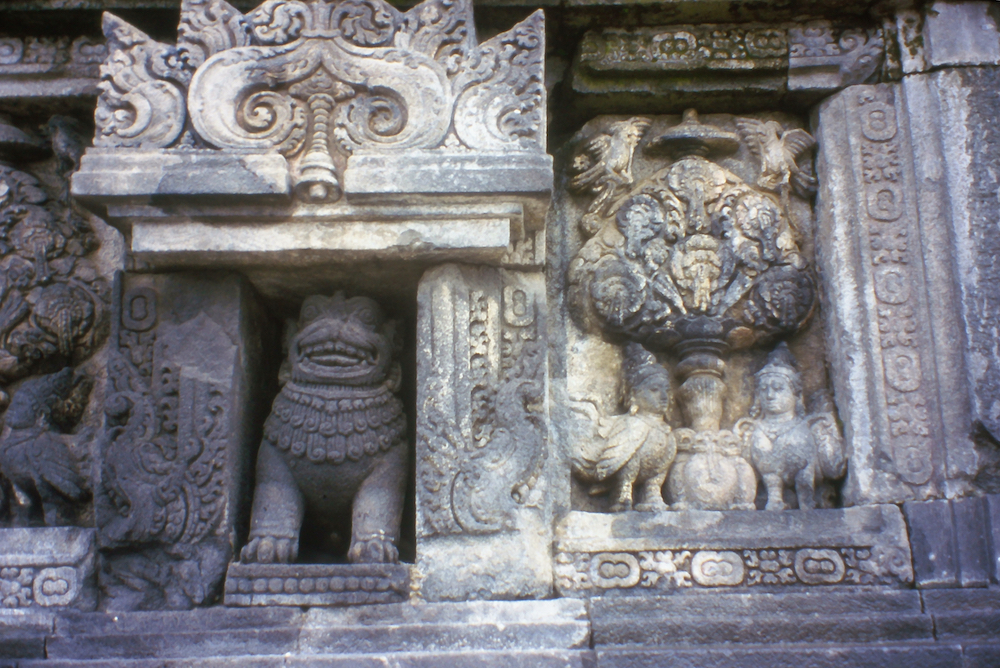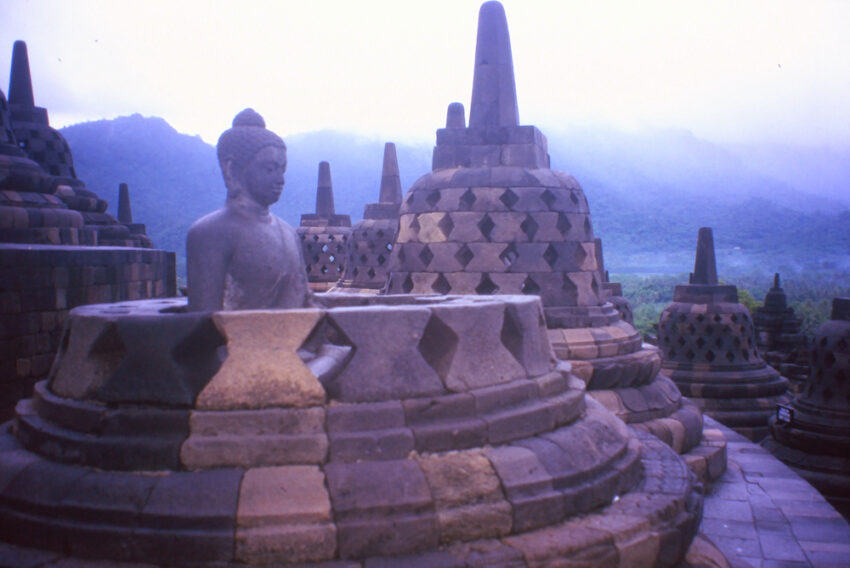12/31/98: Today we went back out to the area where we saw The Ramayana the other night. We took a guided tour of the surrounding area, which included both Hindu and Buddhist temples… Like the pyramids, you have to wonder how difficult it was for some of these megalithic stones to be put into place in such out of the way, rugged terrain without the help of modern machinery…
12/31/23: Indonesia has a diverse history spanning millennia. Today, Indonesia has no formally “official” religion. However, 87% of the population identify as Muslim (of those about 99% are Sunni, and 1% are Shia), and “the first principle of Indonesia’s philosophical foundation, Pancasila, requires its citizens to state the belief in “the one and almighty God.’” According to the Wikipedia article linked above, approximately 10.5% of the population are Christian in background, 1.69% are Hindu, and .73% are Buddhists. Ironically, though the country is dominated by Islam (which did not arrive in the islands until about 1200AD), the vestiges of the Hindu and Buddhist religions and philosophies (arriving in first century and fifth centuries respectively), their cultural and social influences, are still syncretized within the overall culture and identity of the country. What’s more, the physical landmarks of Hindu and Buddhist eras dominate the landscape as well as represent the primary draw for international tourism.
Hence, our viewing of The Ramayana a few days before this tour of the Prembanan Temple complex (a Hindu religious site) as well as Borobodur (a colossal Buddhist stupa). Borobodur dates to about 700AD, and Prembanan Temple dates to approximately 850BC. Both sites suffered decay from earthquakes and volcanic eruptions over the centuries. Borobodure was buried in ash from volcanic eruptions around 1000AD, and were only re-discovered in 1814. Sadly, both sites have been ransacked by colonial powers over the decades since their excavation. A year or so after Ruth and I took this trip we were visiting The Art Institute in Chicago and came upon a display featuring one of the stone heads of a buddha statue that belonged to Borobodur. Provenance of antiquities and artifacts is a difficult web to unravel, but I have to admit I was both thrilled to see such an artifact being accessible to people half way around the world, while at the same time wondering if it was appropriate for it ever to have been taken from the original site. For our part, we are thankful to have had the great privilege of actually walking among the ruins of the original sites in Yogyakarta, Indonesia.
NOTE: The photo above shows one of the dozens of smaller, “uncovered” stupas that encircle each level of the overall Borobodur stupa complex. Each stupa resembles a bell, but inside the granite “bells,” which are carved into ornately designed latticework, sits a solitary buddha statue.




